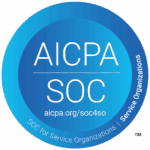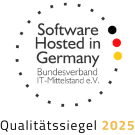To understand the evolving payment habits of consumers in Europe, the European Central Bank (ECB) launched a survey titled “Study on the payment attitudes of consumers in the euro area (SPACE)” in 2019. Encouraged by the results of the first survey, a second one was conducted. And its results are interesting. Understanding the changing payment preferences of consumers in Europe gives us insights into consumer behaviour and demand, and how these will shape market trends.
The results from the SPACE survey gives an idea about the different payment methods used by consumers at the point of sale (POS), for person-to-person payments (P2P), online and for recurring payments. Plus, the survey results also gives insights into consumers’ access to and acceptance of cash along with other payment methods.
So, what are the key findings on the payment attitudes of consumers?
Two major trends are highlighted by the survey:
- First, online payments have become more frequent.
- Second, the share of cash payments at the POS has declined (though this has been a growing trend, the pandemic accelerated it much).
1. Online payments are steadily increasing
The share of online payments done by consumers for non-recurring purchases increased a fair amount from 2019 and 2022, all over the euro area. The share of online payments in 2022 was 28% (up from 14%). This indicates that online payments were more frequently used for larger payment amounts. Non-recurring, day-to-day payments are defined as those payments that are made for the purchase of goods and services at a physical point of sale (POS), P2P payments not related to the purchase of goods and services, and online payments. Online payments are defined as goods and services that are ordered and paid for online.
Goods ordered online but paid while picking up the goods at the store or cash on delivery (that is paying the courier delivering the goods) were defined as POS payments. Of all day-to-day payments, 17% were made online in 2022, compared with only 6% in 2019. The share of P2P transactions in non-recurring payments declined slightly, down from 5% to 4%. No doubt, the pandemic and subsequent changes to consumer behaviour have influenced some of these numbers.
2. Use of cash is declining, but remains most important at the POS
The overall volume of cash payments at the point of sale (POS) has declined in recent years. Much of this change was driven by the pandemic. In 2022, 59% of transactions were carried out using cash, down from 72% three years ago. In 2016, cash accounted for 79%. However, cash still remained the most frequently used payment method at the POS within the Euro area. For the first time, the share of card transactions in 2022 (46%) was higher than the share of cash transactions (42%) at POS, when measured in terms of value. In 2019, cash was 47% while card transactions accounted for 43%.
Consumers were making payments using mobile phone apps more often than before. Mobile phone payments accounted for 3% of the number of transactions in 2022 (up from 1% in 2019) and 4% of the value (up from 1%). However, their share in total POS payments was still relatively low compared to cash and card payments.
Key findings of the SPACE 2022 survey
- 55% of consumers in the euro area prefer cards and other cashless payment methods when paying in a shop. 22% preferred cash, while 23% had no clear preference. The main reason reported by consumers is the convenience of digital payments. Nevertheless, a large number of consumers in the region still feel cash is important as a payment option.
- 81% of transactions in 2022 in the euro area were made through cashless means.
- The share of online payments in consumers’ non-recurring payments increased from 6% in 2019 to 17% in 2022. Online payments were used especially for buying food and daily supplies from supermarkets and restaurants.
- The large majority of recurring payments were made using either direct debit or credit transfers.
What it means for Cash
- Cash was the most frequently used payment method at the point of sale (POS) in the euro area. It was used in 59% of transactions, down from 72% in 2019.
- Cash was most frequently used for small value payments (less than €50) at the POS. For payments over €50, cards were the most frequently used method.
- Cash was the dominant means of payment in person-to-person (P2P) transactions in the euro area. However, its share in the total number of payments declined from 86% in 2019 to 73% in 2022.
- The perceived key advantages of cash were its anonymity, protection of privacy, and better control over one’s own expenditure.
- Compared to before the outbreak of the pandemic, 54% of consumers said there had been no change in how often they use cash at physical points of sale; 31% of consumers indicated that they were using cash less often and 14% more often.
What it means for Cards
- Card payments were used in 34% of POS transactions, up from 25% in 2019.
- In terms of value of payments, cards (46%) accounted for a higher share of transactions than cash payments (42%).
- Contactless card payments at the POS increased considerably over the last three years – from 41% of all card payments in 2019 to 62% in 2022.
- The perceived key advantages of cards were that consumers don’t have to carry cash with them, along with the convenience of contactless payments.
What it means for Mobile payments
- The share of payments using mobile apps increased to 3% in 2022, up from 1% in 2019.
- The use of mobile apps for making P2P payments increased three-fold between 2019 and 2022, increasing from 3% to 10%.
Read more about the SPACE 2022 survey here.
Final Thoughts
One thing emerges clear from the results of SPACE 2022 – cash still seems to a favourite of European consumers, though cards and other electronic forms of payments are finding more favour. The survey highlights several important aspects of consumer behaviour and how they prefer to send/ receive money. These insights also help the ECB to track trends, identify emerging payment methods and measure their relevance across the Eurozone. This, in turn, will help in the drafting of suitable policies and take steps to bring in a more cohesive and integrated digital payments ecosystem in Europe.
Jose Augustine is the Chief Business Development Officer at Novalnet with extensive experience in European payment industry and a knowledge powerhouse.












